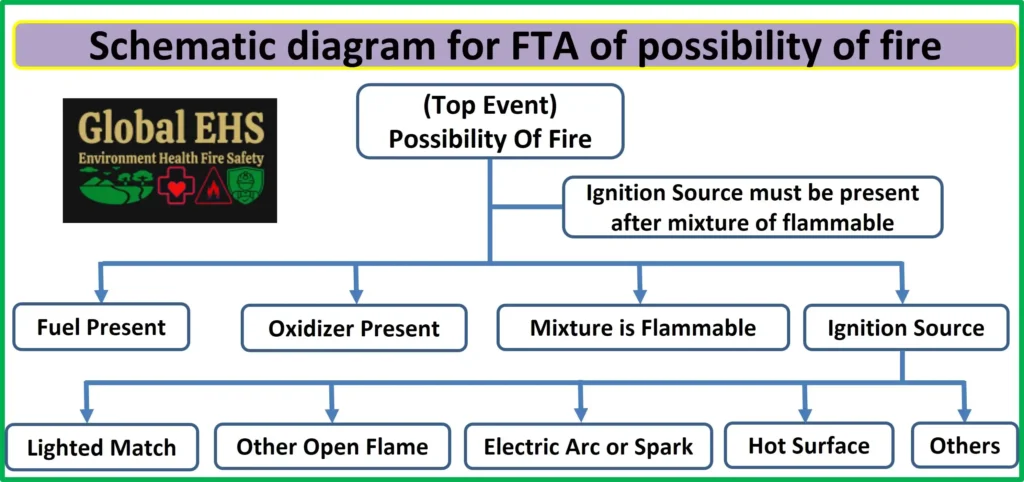Fault Tree Analysis (FTA)
It is a method to represent the logical combinations of various systems which lead to a particular outcome (top event).
It is a graphic model that determines various combinations of equipment faults and failures that can result in an accident.
This is a sophisticated form of reliability assessment and it requires considerable time and skill. The procedure is to start from a selected undesirable top event such as ‘gas coming out of a scrubber’ and then trace it back to the combination of faults and conditions which could cause the events to occur.
Apart from hazard identification, wide usage of it for quantitative risk analysis. It will be necessary to obtain meaningful failure data of each component to arrive at the frequency of occurrence of the ‘top event.’
In Fault Tree Analysis (FTA), assumptions of abnormal operations are in normal operations of a plant.
Showcase of the ultimate abnormal event (Such as gas leakage) is in a rectangle at the top.
Then all combination of individual failures that can lead to that abnormal event are there in the logical format of the Fault Tree.
By estimating the individual failure probabilities and then using the appropriate arithmetical expressions, the probability of the top abnormal event can be calculated or predicted.
This Fault Tree Analysis makes it easy to investigate the impact of alternative preventive measures. Development of Fault tree from top to bottom through a series of symbols which define the flow of logic from the base causes of an event itself. Detailed probability data are most desirable.
Development of this method of Fault Tree Analysis by Bell Laboratories (USA) in 1961 to predict potential catastrophic events which could occur with the Air Force. It is more useful to assess chemical hazards.
Without specific Fault Tree symbols (symbology), a schematic diagram of one top event (possibility of fire) is given below.

Some sample top events for Fault Tree Analysis (FTA) are:
- Injury to________________.
- Damage to________from_________.
- Explosion of___________.
- Loss of control of__________.
- Rupture of________.
- Loss of pressure in________.
- Overpressurisation of________.
- Unscheduled release of_______.
- Collapse of_________.
- Overheating of________.
- Uncontrolled venting of_______.
- Inadvertent start of_______etc.
A computer is much useful to carry out mathematical Fault Tree calculations using Boolean algebra.